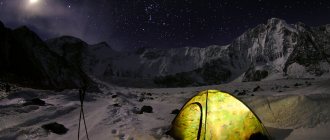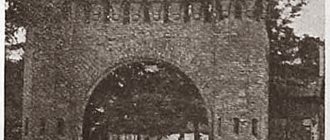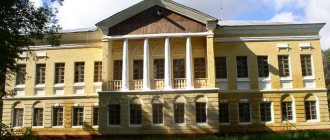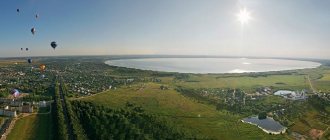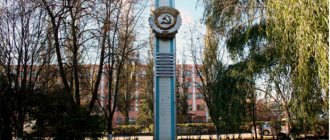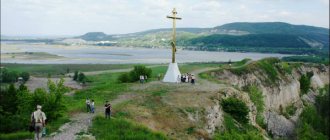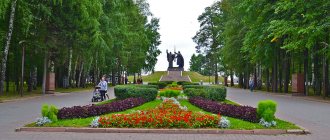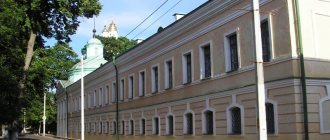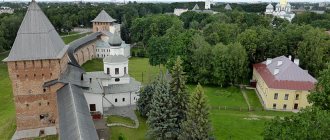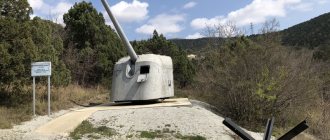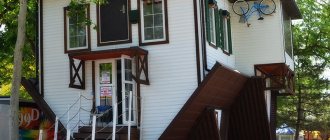Going on a trip to Altai is something everyone should do at least once in their life. Mountains, passes, waterfalls and lakes, valleys and steppes. One of the most beautiful roads in the world, unusual archaeological finds, ancient burial mounds and rock paintings. Choose which of these places you want to see most and we will plan, book and organize a personalized premium trip for you.
Below we will tell you about the main attractions in Altai that you can see during your trip.
Sights of Altai
Altai nature is a source of pride and admiration for local residents and tourists. In the local reserves you can see with your own eyes representatives of flora and fauna that are endangered and listed in the Red Book. You can enjoy the views and aromas wafting from the Altai meadows. In some places, herbs growing in meadows are even allowed to be collected. Locals do this to brew healing infusions and are happy to share recipes with you.
In general, nature is treated with special reverence here. Altai has a large number of protected reserves and sites that are included in the UNESCO World Heritage List. The reserves are especially protected by the state, so when visiting them, you must follow the strict rules introduced for guests. We wish you a pleasant journey with our guide to 50 popular places in Altai!
- Altai Stonehenge, Altai State Nature Reserve and Denisova Cave;
- Belokurikha, Patmos Island and Nicholas Roerich Museum;
- Museum of Vasily Shukshin, Tavdinsky caves and rock paintings on the Kalbak-Tash rock;
- Pazyr Mounds, Anokhin National Museum and Orkotoy Bridge;
- Gorno-Altai Botanical Garden, Assumption Cathedral in Biysk and Mountain Pharmacy Museum in Barnaul;
- Arboretum "Kholmogorye", Katunsky Reserve and Altai Memorial Museum of Titov;
- Kolyvan stone-cutting plant, Chapel at the site of the death of Mikhail Evdokimov and Mount Belukha;
- Chuisky tract, Geyser lake and lake Aya;
- Mount Tserkovka, “Altai Mars” and the Katun River;
- Katu-Yaryk Pass and the valley of the Chulyshman River, “Stone Mushrooms” and the Ukok Plateau;
- Teletskoe Lake, Krakolskaya Valley and Multinskie Lakes;
- Aktru glaciers, Shavlin lakes and Uchar waterfall;
- Mount "Devil's Finger", Lake Bolshoye Yarovoye, and Chike-Taman;
- Tsarsky Kurgan, Mountain Charysh and Kamyshlinsky waterfall;
- Chemal Hydroelectric Power Station, Korbu Waterfall and Red Gate Canyon;
- Kurai and Chui steppes, Uimon valley (steppe) and Seminsky pass;
- Lakes Akkemskoye, Kucherlinskoye and Darashkol.
Excursion to the heart of the Altai Mountains to the most iconic places:
The historical heritage is also distinguished by rich artifacts and archaeological finds. It was in Altai that a new species of primitive man, the “Denisovo man,” was found and rock petroglyphs were discovered. Moreover, not only monochromatic, but also the first petroglyphs in color. In addition to prehistoric finds, here you can also find pieces of people’s lives during the schism of the church in Rus'.
The fact is that many Old Believers who did not agree with what was happening went to live in the steppe. They established their way of life there, built houses from chopped wood and lived according to their own laws. In some steppes there are still remains of dwellings where those same Old Believers lived. In a word, there is definitely something to see in Altai.
Cranberry jelly: Burlinskoye Lake
There are few pink lakes in the world. And one of them - Burlinskoye - is located in Altai. Like most such reservoirs, the lake is shallow: on average less than a meter deep. And very, very salty, stronger than the Dead Sea! It is not surprising that this salt is mined right there, for which railway tracks are laid along the bottom. And it has been mined for a very long time, since 1768 - this salt was even served on the table of the Tsar. Despite the salinity, the lake has the color of sweet cranberry jelly. All because of microscopic algae - depending on their vital activity, the reservoir changes color from blue to steel and bright pink.
Burlin Lake (Photo source: eco-cosm.com)
How to get there
Getting to the lake takes a long time, but is not difficult: you need to get to Slavgorod, and from there along an asphalt road to the village of Bursol, where the “jelly” is spilled.
What to see in Altai - TOP 20
To begin with, we advise you to get acquainted with the historical values of Altai. Look at the “Altai Princess”, visit the Denisova Cave, study the rock paintings on the Kalbak-Tash rock and the Pazyr mounds with their burials. Then you can go and learn more about the modern culture of Altai. The Nicholas Roerich Museum, the Vasily Shukshin Museum, the Museum of Cosmonautics and others will help you with this. And to be impressed by the beauty of Altai’s nature, we advise you to visit protected reserves.
For example, the Gorno-Altai Botanical Garden or the Kholomogorye Arboretum. You can even stay at one of the sanatoriums located in Belokurikha or on the shores of Bolshoy Yarovoye Lake. After all, the nature of Altai is famous not only for its beauty, but also for its healing properties. Comfortable conditions in European-level sanatoriums, healing forests and lakes of Altai, mineral springs and silt mud will help you relax, get rid of stress and improve your health. For your convenience, below is a map where you can find all the attractions described in this article.
Altai Stonehenge
Altai Stonehenge
Stonehenge in Altai is much smaller than its English original. This place is called so because of the stones found that are covered with petroglyphs of the Pyzyr culture. There are 5 stones in total; the distinctive thing is that they are all located in a certain way, relative to the cardinal directions, which leads scientists to believe that this territory served as a burial place for shamans. Another reason to think so is a stone that visually resembles a chair; it could serve as a “throne” for one of the shamans.
There is an opinion that if you sit in this “chair” and relax or even start meditating, your consciousness will “clean up”. Now the stones serve as road signs, but they do not cease to be a separate archaeological attraction worthy of a visit.
Altai State Reserve
Altai State Reserve
The Altai State Reserve is included in the UNESCO World Heritage List, and some representatives of the flora and fauna that live there are listed in the Red Book and are endangered. However, you will have the opportunity to see them. And besides this, you will be able to walk through coniferous forests, enjoy the views and aromas of Altai meadows, see healing rivers and waterfalls with the purest water, and immerse yourself in the unique atmosphere of Lake Teletskoye, which the Altai people so protect.
Katunsky Reserve
Katunsky Reserve
The Katunsky Nature Reserve is a protected place, but untouched by humans. It is included in the UNESCO World Heritage List. The reserve is also commonly called the “land of a hundred lakes” and the “golden gate of Altai”. In addition to amazing wildlife species, you will find rare fauna here that cannot be found anywhere else.
You can explore this protected area of Altai on this excursion:
Denisova Cave
Denisova Cave
If you are interested in history, and especially the primitive life of people, rather go to the Soloneshensky district of Altai to the natural monument Denisova Cave.
Archaeological excavations are still ongoing at this site to this day. There is evidence that people lived here 280 thousand years ago. This is confirmed by the found tools of labor and everyday life, faunal remains and an unfamiliar human species. On the walls of the cave you can see petroglyphs - the remains of the simple creativity of primitive people.
Belokurikha
Belokurikha
Belokurikha is a popular resort town for lovers of sanatorium holidays and ski resorts. Here all nature is subordinated and aimed at healing. There are a large number of dense forests around, from which the fresh air of pine, fir and cedar blows; springs gushing out of the ground; Altai medicinal herbs, which are usually collected, dried, and then made into healing decoctions, and much more. You can find a large number of natural miraculous monuments: rocks, caves, winding paths and mountains.
The level of sanatoriums in Belokurikha is not inferior to European ones, having excellent service and infrastructure. And more recently, this place has also become a popular ski resort.
In Belokurikha you can stay inexpensively for the night, here are the options:
- Hotel "Berkut". Rating: 9.5 based on 438 reviews. Price 1200 RUB.
- Guest house "Kovcheg". Rating: 9.3 based on 128 reviews. Price 1000 RUB.
- Hotel Bavarenok. Rating: 8.8 based on 268 reviews. Price 900 RUB.
- Mini-hotel GUESTS. Rating: 9.2 based on 186 reviews. Price 1400 RUB.
Patmos Island
Patmos Island
Patmos Island is an island on the Katun River, the largest component of which is rocks. Tourists come here to attend services in the Temple of St. John the Theologian and look at the Znamensky Convent, which were built on the island of Patmos. There is only one “but” - the suspension bridge. Its height is 15 meters, and it tends to sway from people and wind. However, this is the only way to reach the sacred sites. We hope you are not afraid of heights and will take this as another adventure.
Nicholas Roerich Museum
Nicholas Roerich Museum
For the artist Nicholas Roerich, Altai was interesting because it combines Eastern and Western culture. To study them better and get inspired, he went on an expedition, during which he lived in a small house. Later, in the 19th century, this house was turned into a museum; in 2001, it was re-opened after reconstruction. Once on the excursion, you can learn more about the life of Nicholas Roerich and see reconstructions of his paintings with views of Altai.
Vasily Shukshin Museum
Vasily Shukshin Museum
Vasily Makarovich Shukshin was from the village of Srostki, Altai Territory. Local residents are very proud of the talented native and even erected a monument in his honor on Mount Picket. The Shukshin Museum is a complex of three buildings where most of the life of the writer, actor and director took place: the house in which he grew up, the school where he studied and worked, and the estate that Vasily Shukshin acquired for his mother. On the excursion you will be able to see with your own eyes the places where the great man lived, learn more about his life and work and the history of his native village of Srostki.
Assumption Cathedral in Biysk
Assumption Cathedral in Biysk
This Cathedral has been the “calling card” of the city of Biysk for 120 years. The temple is recognized as the most beautiful Orthodox temple in the Altai region. It attracts tourists not only with its external beauty, but also with its internal beauty. The temple was built of red brick in the Russian-Byzantine style with hipped domes. All this was built with donations from parishioners. Today the Cathedral is ready to welcome everyone. It is worth noting that services were held there even in Soviet times, when religion was banned.
You can stay in Biysk for the night in these popular hotels:
- Apart-hotel "Oblaka". Rating: 9.4 based on 202 reviews. Price 900 RUB.
- Boutique hotel Prague. Rating: 8.8 based on 182 reviews. Price 1200 RUB.
- SV Hotel. Rating: 9.1 based on 83 reviews. Price 1500 RUB.
- Hotel "On the Old Place". Rating: 8.9 based on 206 reviews. Price 1500 RUB.
Tavdinsky caves
Tavdinsky caves
50 caves of varying depths and lengths are located along the 5 kilometers of the Katun River. Tavdinsky lakes are a natural site that the Altaians themselves recommend visiting. In the largest, the Big Tavdinskaya Cave, you can see a rich exhibition compiled specifically for tourists. For a comfortable excursion program, electricity is installed inside the cave. Before leaving, you should leave a coin on the ledge of the cave as a sign of gratitude to its keeper.
Rock paintings on the Kalbak-Tash rock
Rock paintings on the Kalbak-Tash rock
Kalbak-Tash is a tract where the largest number of petroglyphs in all of Altai are collected. You can find rock paintings not only here, but in this place alone there are 5,000 petroglyphs at once. The plot is standard: everyday life, hunting, rituals and solar signs. However, these "standard" subjects were created from the 4th to 6th centuries BC. First with wooden tools, and later with stone ones. According to scientists, this place was sacred to the people who lived here, because rituals and ceremonies were apparently carried out at this place.
Pazyrk mounds
Pazyrk mounds
The Pazyrk mounds are also called “royal” because of the large number of finds, some of which are currently kept in the Hermitage. Mounds are ancient burial places, inside which wooden burial chambers are hidden, where men, women, household items and even a horse in full uniform were found in sarcophagi. Many of the “royal” mounds were plundered many years ago, but the underground permafrost made it possible to preserve what remained in excellent condition.
Anokhin National Museum
Anokhin National Museum
Recently the museum celebrated a big milestone – 100 years. The Anokhin Museum Complex is a multi-tiered building in the style of a mound. Here you can learn a lot about the history of Altai from ancient times to the present day. You will be able to see ancient books, documents, photographs, collections of minerals, manuscripts, objects of life and everyday life of the Altai Territory.
Orkotoy Bridge
Orkotoy Bridge
The bridge is one of the architectural landmarks of Altai. The Orkotoysk bridge is an automobile suspension bridge, which is located over the deepest and narrowest place of the Katun River. Tourists come here to see with their own eyes the views of the beautiful blue canyon.
Gorno-Altai Botanical Garden
Gorno-Altai Botanical Garden
The botanical garden looks like a huge clearing with artificial ponds and paths. The garden territory itself (60 hectares) is surrounded by fast rivers and forests. And in the garden you can see rare plants listed in the Red Book and protected at the state level.
When visiting a botanical garden, familiarize yourself with the rules of conduct in it. Since this area is specially protected, failure to comply with the rules may result in trouble.
Mountain pharmacy-museum in Barnaul
Mountain pharmacy-museum in Barnaul
A visit to the pharmacy will be especially interesting for tourists related to medicine. Today, the pharmacy-museum is a tall, bright building where you can take a tour, look at the exhibition, taste balms and learn the secrets of their preparation. And 200 years ago, in this place there was a real pharmacy, where balms and pills were prepared from aromatic Altai herbs and flowers.
Barnaul has inexpensive options for hotels and guest houses. Here they are:
- Mini-hotel "Charm". Rating: 8.7 based on 390 reviews. Price 850 RUB.
- House City Hotel. Rating: 8.7 based on 239 reviews. Price 1000 RUB.
- Hotel Central Barnaul. Rating: 9.4 based on 148 reviews. Price 1100 RUB.
- Apart-hotel Chkalov & Hotel-22. Rating: 9.2 based on 551 reviews. Price 1000 RUB.
Arboretum "Kholmogorye"
Arboretum "Kholmogorye"
The arboretum is a favorite place for tourists vacationing with children. In addition to magnificent views, clean mountain air, plant plantations and two clean ponds, you can find here children's attractions and a zoo, which will delight young visitors. Adults can find entertainment in pottery workshops. The whole family can relax in the summer cafes located in the park or choose gifts in souvenir shops and stalls with natural products of Altai.
Altai Memorial Museum of Titov
Altai Memorial Museum of Titov
Museum of Cosmonautics named after German Titov, who piloted the Sputnik-2 spacecraft. Among the elements of the exhibition you can find a model of that same ship. The Titov Memorial Museum is divided into two parts: in the first you can learn about the past of astronautics and see older exhibits, in the second you will have the opportunity to immerse yourself in the atmosphere of modern space, see new exhibitions and listen about the development of astronautics in our time.
Kolyvan stone-cutting plant
Kolyvan stone-cutting plant
The plant's workers are engaged in processing stones, making tableware, and developing interior and exterior items. Going to the stone-cutting factory in the village of Kolyvanl, you can see with your own eyes the production and the work of the craftsmen. And also, visit the thematic museum located on the territory of the plant to learn more about its history and see the famous works of local stone carvers.
Chapel at the site of the death of Mikhail Evdokimov
Chapel at the site of the death of Mikhail Evdokimov
The chapel is a must-visit for tourists who are fans of the work of Mikhail Evdokimov. Some travelers specially come to Biysk to honor the memory of their favorite actor. At the site of the accident in which Mikhail Evdokimov died in 2005, a chapel and a memorial stone were installed, and 47 birch trees were planted around. This is how long the actor lived.
Ski resorts
For those who ski, snowboard, or simply enjoy a cheesecake rushing down a hill, Altai provides the opportunity to diversify their vacation with a visit to ski resorts. In the Altai Republic, where the Altai Mountains are located, the most famous resorts are Manzherok, TeletSki, and Blagodat.
The Manzherok ski complex is located near the village of the same name, in the heart of the tourist center of the Altai Mountains. Trails of varying difficulty are located on the northern slope of Mount Malaya Sinyukha, their total length is 21 km. A 2516 m long gondola cable car The training slope is also served by a travelator. The complex has rental services, a ski school, hotels, a restaurant, a bath complex, and entertainment services.
It is worth noting that Manzherok is visited not only by those who like to ride down the mountain. Both in summer and winter, the resort’s cable car takes everyone up to see the panorama of Lake Manzherok. At the top station there is a cafe and mini-museum “Legend of the Mountains” with the Golden Woman - a revered character in Altai legends who helps in the fulfillment of truly important desires.
Near Lake Teletskoye, on the northern side of Mount Kokuya, the slopes of the Teletsky ski resort (#TeletSki) are built. Thanks to the influence of the non-freezing Lake Teletskoye, the area is distinguished by a mild climate, which is classified as a resort. From the height of Kokui (1386 m), the highest mountain in the immediate vicinity, there is a beautiful view of the taiga expanses and Lake Teletskoye lying at its foot.
At the top of Kokuya Photo: © Galina Eremina
Eight Teletsky trails with a total length of 17 km and an elevation difference of up to 830 m are suitable for both beginners and experienced athletes. In addition, good snow cover on the slopes attracts fans of off-piste skiing. Lifting is provided by rope tow and chair lifts. The resort also has rentals, a ski school, a hotel and several cafes. It annually hosts festivals and competitions in freeride and freestyle.
The Blagodat ski complex occupies the slope of Mount Tserkovka in Belokurikha. The rope tow and chair lifts are 950 and 2050 m long, respectively. The routes below them differ in length and elevation differences - 240 and 550, respectively. The complex also has rental services, a cafe, and in the village, whose streets lie right next to the lower station, there is a wide selection of guest houses and sanatoriums.
Also, ski trails are equipped by the Seminsky Pass on the pass of the same name. This ski resort was created for training athletes, but not only they can take advantage of its capabilities.
Top of the town Church in Belokurikha Photo: © Galina Eremina
What to see and where to go in Altai - 30 more places
If you already know enough about the history of the Altai region, it’s time to go enjoy the views of nature, sometimes even wild and untouched by human hands. You can climb the highest mountain in Altai - Belukha Mountain, see the geyser show on Geyser Lake, explore caves, rocks, see Kamyshlinsky waterfall and Uchar waterfall, go to the steppes and even visit another planet - “Altai Mars”. For those who love extreme recreation, we offer kayaking on the Katun River.
For ski lovers, several ski slopes open every winter. For example, on Mount Tserkovka. If you come in the summer and don’t like extreme rides, you can simply swim in the famous bright lakes, solitude with nature and meditate on the “Thumb” mountain, which is famous for its ability to treat women from infertility, and visit places that are not so popular among tourists. for example, go to the sandy steppes. Please note that some monuments may be particularly difficult to reach. This will need to be done on foot or in an off-road vehicle.
Mount Belukha
Mount Belukha
Belukha is the most popular place for tourists to visit. Having a height of 4506 meters above sea level, this mountain bears the well-deserved title of the highest mountain in Siberia and is the natural border between Russia and Kazakhstan. Mount Belukha is included in the UNESCO World Heritage List as part of the Golden Mountains of Altai complex. The mountain got its name due to the large amount of snow on the peaks.
You can climb Belukha, but you will have to wait for good weather. This can be done at a camp site located nearby. To climb to the top and see all the beauty of Belukha, you will need 2-4 days. Please note that you can only get to the mountain through neighboring villages, since there are no direct roads there.
Chuysky tract
Chuysky tract
The Chuysky tract today is an asphalt road, which is the main route for traveling around Altai and is included in the TOP 10 most beautiful roads in the world in the National Geographic rating. But this is not only the most beautiful, but also the oldest road in Russia. The first mentions are found in Chinese chronicles of the last millennium. Previously, the road was used by traders and warriors on their way from Russia to China. Traveling along this road, you will be able to see the main tourist centers: Chemal, the Katun River, the Katu-Yaryk pass and the valley of the Chulyshman River.
You can discover the impressive passes of the Chuysky tract on this excursion:
Geyser Lake
Geyser Lake
The bright color of the geyser lake is explained by the blue silt that is “thrown out” to the surface during the geyser eruption. The lake is quite small, but tourists constantly come here to watch and capture how geysers emerge from the middle of the lake. The lake is located 165 km from the border of Russia and Mongolia.
Lake Aya
Lake Aya
Translated from Turkic, “Aya” means “Moon”; the lake received this name because of its shape. Lake Aya is a kind of border between the steppe and mountain Altai. It is popular with tourists looking for a relaxing holiday amidst picturesque scenery. On the shore of the lake you can stay in a tent or at one of the tour bases that are open all year round. In July-August the water warms up to a high temperature, even children can swim. Locals and travelers appreciate this place for its clean air, stunning views and calmness.
Mount Tserkovka
Mount Tserkovka
Another miraculous landmark. Mount Tserkovka got its intriguing name thanks to its peak, which visually resembles a church dome. The height of the mountain is 851 meters. In summer, spring and autumn, you can visit an open-air cafe or souvenir shop here, but in winter, Tserkovka welcomes professional skiers as a developed ski resort.
"Altai Mars"
"Altai Mars"
7.5 km from the Chudsky tract in the valley of the Kyzyl-Chin River is located not just a landmark, but an entire planet. Due to the large amount of ores in the soil, the local mountains acquire a pinkish-red hue, and the lack of vegetation only enhances the resemblance to desert Mars. Despite the popularity of this place, you rarely see many tourists here, so you can enjoy the solitude and take a couple of picturesque photos.
Katun River
Katun River
As you may have noticed, more than one Altai attraction is located along the Katun River. It’s not for nothing that this river is called the main river of Altai and even its name means “mistress”. If you want to visit all the attractions near Katun, go to the Turquoise Katun tourist area. From here excursions depart to the Tavdinsky caves, the Tavdinsky arch and to Maralniki - special farms where rare deer are bred. On the territory of “Turquoise Katun” you can find cafes, hotels and shops.
Katu-Yaryk pass and Chulyshman river valley
Katu-Yaryk pass
Altaians consider the valley of the Chulyshman River their “pearl”. Many tourists want to get here for the breathtaking views of the valley from a height of 900 meters, for the nearly 4-kilometer-long serpentine road to the Katu-Yaryk pass, a trip along which will definitely take your breath away, and for the developed infrastructure where tourists can relax, have a snack at cafe or leave your car. Be careful on the serpentine road, as it is not only very beautiful, but also dangerous. You shouldn’t go there if you are new to driving, because anyone can go down, but even professionals don’t always succeed in going up.
You can go on a trip to Katu-Yaryk with this excursion:
"Stone Mushrooms"
"Stone Mushrooms"
“Stone mushrooms” are huge rocks with massive shuttlecocks on top, which from a distance have the shape of a mushroom. These rocks were formed as a result of the weathering of rock and now stand alone on the mountain ridges. If you want to see this natural monument, you should hurry, because the “stone mushrooms” are subject to gradual destruction and earthquakes.
Ukok Plateau
Ukok Plateau
The Ukok Plateau or Plateau “closet” is the most mysterious attraction of Altai. The whole mystery lies in the geographical disparity. The plateau is equally distant from 4 world oceans and is located on the border of 4 countries at the same time. The average height of the “massive mountain” (another translation option for Ukok) is 2.5 thousand meters above sea level.
The Ukok Plateau amazes not only with its views, climate and location, but also with its unique finds. After all, it was here that the “Altai Princess” was found - a landmark that we have already described above.
Lake Teletskoye
Lake Teletskoye
Lake Teletskoye and “small Baikal” are included in the UNESCO World Heritage List as part of the Golden Mountains of Altai complex and are the largest lake in Altai. The fresh water is so clean and transparent that its visibility reaches 14 meters deep. Going to Lake Teletskoye, you can see several more natural attractions located nearby: Korbu and Kishte waterfalls, Stone Bay and the “drunk” pine Yailyu.
You can take a boat ride around Lake Teletskoye on this excursion:
Krakola Valley
Krakola Valley
The Krakola Valley attracts tourists fascinated by history and the magic of primitive times. In the valley along the Karakol River there is the largest number of monuments of former days: sacrificial slabs, mounds, altars and rock paintings. It was here that the first colored petroglyphs were found. The Krakol Valley is considered a sacred place of Altai, and in order to preserve this, this territory and its surroundings were united into the protected papa “Uch-Enmek” in 2001.
Multinskie lakes
Multinskie lakes
Multinskie lakes are a complex of three main lakes: Lower, Middle and Upper. Not far from the main complex there are 4 more lakes: Transverse, Upper Transverse, Kuiguk and Krepkoe. These lakes are favorite places for hiking tours. Since they are located far from populated areas, you can get here on foot or by all-terrain vehicle. Once you get to the Multinskie Lakes, you can enjoy a breathtaking view of nature: coniferous forests, rocks, boulders, picturesque meadows and trails - all this surrounds the lakes. In summer, the water in the lakes warms up to a pleasant temperature, so those who wish can even swim.
Aktru Glaciers
Aktru Glaciers
Aktru glaciers surprise with their diversity: valley, cirque, hanging, hanging cirque and flat-topped glaciers stretch over a distance of 16 square kilometers. An interesting feature of glaciers is that their northern sides are several times steeper than their southern ones. Professional climbers will definitely be interested in this place, because most of the glaciers are suitable only for trained travelers.
However, there are several places where even people who are far from conquering the peaks can go. Going to the glaciers, you will also be able to see several related attractions: Blue Lake, the Aktru River, waterfalls, and the chain of hills “Baranyi Lby”.
Shavlinsky lakes
Shavlinsky lakes
The landscapes on the Shavlinsky lakes literally take your breath away. Fragrant Altai flower meadows, fields, and mountain peaks surround a chain of lakes of bright colors. The color of the water in the lakes is different: in some it is blue, in others it is green, and in others it is even azure. But all these lakes are united by an amazing richness of colors. This is how they gained their world fame.
The length of the Shavlinsky lakes is about ten kilometers. The water here is cold and only a rare tourist decides to swim. Most people come here to enjoy the beauty of nature.
Uchar Waterfall
Uchar Waterfall
The Uchar waterfall is located on the territory of the Altai State Nature Reserve, namely in the Ak Chalushpa park. The main name is Bolshoi Chulchinsky waterfall. “Uchar” translated as “impregnable” is a well-deserved second name, since the waterfall is included in the rating of the most inaccessible attractions in Russia.
Uchar is often called a water slide, since the water does not fall, but rolls down sharp slopes, but the height of this “slide” reaches 160 meters. The lack of direct falling water does not make the waterfall any less attractive or quiet. According to reviews from tourists, there is no point in talking near the Chulchinsky waterfall, because you still won’t hear your interlocutor.
Mountain "Devil's Finger"
Mountain "Devil's Finger"
The mountain got its name due to its external resemblance to the thumb of a human hand. Even the most unprepared tourists can conquer this peak; climbing here is not at all difficult. Local residents believe that women suffering from infertility should definitely visit this place, as it helps fight the disease. Devil's Finger Mountain is a popular place for meditation and solitude with oneself. In addition, it is possible to take beautiful pictures of the unearthed landscapes.
Lake Bolshoye Yarovoye
Lake Bolshoye Yarovoye
Another place that will not only delight you with beautiful views, but also help improve your health. Lake Bolshoye Yarovoe is a fresh reservoir with mineral water and silt mud. Not far from the lake there are a large number of sanatoriums and health resorts, the main focus of which is pathologies of the musculoskeletal system. However, even those who do not relax in the sanatorium can swim in the healing waters. Mineral waters and silt mud help improve skin condition and strengthen the immune system.
Chike-Taman
Chike-Taman
Chike-Taman is a mountain pass on which there is an observation deck where tourists can enjoy amazing views of sheer cliffs, deep gorges and mountain peaks. The height of Chike-Taman is almost 1300 meters, and the length is 11 kilometers. Chike-Taman begins near the famous Chuysky tract, which we described above and is complemented by an excursion program along a narrow granite road. The trip will appeal to lovers of extreme sports and picturesque places.
Royal Kurgan
Royal Kurgan
The Tsarsky Kurgan is ranked among the most beautiful and interesting places in Altai that are worth visiting. On a small mound 2 meters high there is a clearing with installed steles. Each stele has its own unique history and legend. It is interesting that the steles were installed with unique precision: 320 centimeters - the distance of each next stele from the previous one.
Mountain Charysh
Mountain Charysh
Mountain Charysh is a famous kayaking resort in Altai. Hundreds of tourists come here for this extreme entertainment. Even a long and difficult road across bridges, rivers and passes does not stop travelers from going kayaking down the Charysh River. We advise you to go for an unforgettable experience and conquer Charysh!
Kamyshlinsky waterfall
Kamyshlinsky waterfall
Kamyshlinsky waterfall is a natural monument of unique beauty. By the way, the waterfall received the status of “natural monument of the Altai Territory” only in 1996. With a height of 12 meters and scenic views all around, the waterfall is a regular destination for hikers. You can get here by car or on foot; the Tsarskaya Okhota tourist complex is located nearby. Please note that to get to the waterfall you will have to walk across a rickety suspension bridge. However, if this doesn't scare you because you love extreme sports, we have great news. Near the waterfall there are attractions and there is the possibility of kayaking.
You can admire the landscapes of the Kamyshlinsky waterfall on this excursion:
Chemalskaya HPP
Chemalskaya HPP
The operating time of the hydroelectric power station on the Chemal River was 1935-2011. Now, once in this place, you can see the hydroelectric power station building, ride the rides of the extreme park located nearby, visit the children's park with the youngest tourists and go to the souvenir market.
Korbu Waterfall
Korbu Waterfall
Korbu Waterfall is the most popular attraction of Lake Teletskoye, which you are already familiar with. Despite the relatively small height, 12.5 meters, the waterfall looks quite impressive. Especially in winter, when the water freezes and stops the fall. However, getting here will not be easy. You will have to obtain a special pass at the visitor center. And once you enter the reserve, you will need to follow strict rules: do not light fires, do not litter, and do not even stray from the paths.
Red Gate Canyon
Red Gate Canyon
Like on the “Altai Mars”, which we talked about above, the rocks of the canyon are reddish-pink in color. The reason is still the same - the high content of ore in the soil. The canyon is not very long, but narrow. It is located north of the village of Aktash. And not far from it there is another picturesque place that you can visit: Lake Chaybekkol or Dead Lake.
Kurai and Chui steppes
Kurai steppe
For connoisseurs of nomadic culture, we offer to visit an absolutely unique place where you can see the other side of Altai. If before this you were presented with the diversity of Altai nature and the richness of its flora, then in the steppes you will not find anything except the steppe wind and minimal vegetation.
Vast open spaces with mountain landscapes somewhere in the distance, the remains of burial mounds, yurts and livestock await you. The steppes are located in the currents of the Chuya River, very close to Mongolia. In addition to the fact that these territories are a huge “place of power” for many local residents and tourists, the Kurai steppe is famous for the large waves of ripples of its endless sands.
Uimon Valley (steppe)
Uimon Valley
The valley is located between the Katunsky and Terektinsky ridges. The Uimon steppe contrasts very much with its flat terrain with the surrounding mountains and passes. During the schism of the church, Old Believers settled here and lived according to their own laws. Their wooden log houses are still preserved here. In the Uimon Valley, you can visit the operating museum of the Old Believers and immerse yourself in the atmosphere of the fusion of different cultures and traditions.
Seminsky pass
Seminsky pass
Seminsky Pass is an unofficial border between the “tourist” Altai and places less popular among travelers. This pass is the most famous in Altai and welcomes thousands of tourists every year. And he is ready for this. After all, at the top there is a well-developed infrastructure: parking, outdoor cafes and souvenir shops. Once at the Seminsky Pass, you will be able to see a stele that was erected on the occasion of the 200th anniversary of Altai’s entry into the Russian Empire.
Lake Akkemskoe
Lake Akkemskoe
If you are planning to go to Mount Belukha, then you will definitely see Lake Akkem, because it is located at the very foot of the mountain. On the shore there are camping areas, a Ministry of Emergency Situations and a helipad. The famous colored mountains can be found nearby.
Lakes Kucherlinskoye, Darashkol
Lake Darashkol
Next to Lake Akkem, in the next valley, there are 2 more lakes: Kucherlinskoye, which gained its fame due to the bright turquoise color of the water, and Darashkol, surrounded by snow-covered rocks. To get to Lake Drashkol, you will have to get a little wet and wade through the river. However, the opening landscapes are definitely worth it.
Winter holidays with children
Gorny Altai is one of the natural Russian destinations where you can relax with children even in winter. Many recreation centers and availability of interesting things will make the trip comfortable. Include in it several places to go with children in Altai, they will definitely like it.
The first could be Lake Svetloe (Swan) in the Altai Territory. In winter, the pond, which does not freeze from the springs, becomes the home of hundreds of swans and ducks. An observation deck with shelter was built to observe them.
Swan Lake Photo: © Elena Antyufeeva
Tigers, leopards, lions, foxes, bears, and deer will interest young guests of the Taiga Zoo at the Edelweiss recreation center on Lake Teletskoye. If just looking is not your option, go to a place where the inhabitants can be petted and fed. For example, goats, ducks, raccoons on the “Shaggy Farm” near the village of Uznezya, Chemal region of the Altai Republic. Peacocks, guinea fowl, ostrich, camel, deer, yaks, and foxes also live there. It will also be possible to treat bison at the nursery near the village of Cherga, Shebalinsky district. In winter, they come down from the mountains to the feeders, and therefore are better visible to guests.
In the same direction, at the entrance to the village. Kamlak is home to the Siberian Legend husky kennel . Funny dogs, as well as several noble reindeer, will be happy to meet each other and have the opportunity to give guests a sled ride.
Inhabitant of the “Siberian Legend” Photo: © Official page of the “Siberian Legend” on Instagram
Husky riding in the Altai Mountains is offered everywhere. For example, at the Manzherok resort , huskies, malamutes, and Samoyeds will ride along the snow-covered Manzherok Lake. Upon prior request, even children will be able to learn how to independently drive a sled. In addition, as entertainment in Manzherok, there is an Upside Down House and slopes are open, allowing you to ride cheesecakes and skis down the mountain . If the latter has not yet been mastered, ski school and take children from 3 years of age to lessons. But ice skating does not depend on the presence of a mountain and is offered by many camp sites and hotels in the Altai Mountains.
the Paleopark Natural History Museum , located in the village of Elekmonar, will be interesting and exciting It features originals and reconstructions of mammoth and dinosaur skeletons, archaeological finds from the Scythian and Turkic eras, as well as a colorful collection of minerals, some of which glow neon under ultraviolet light. Here, young researchers will try themselves in the role of archaeologists, digging up a dinosaur in the playground.
For those who cannot imagine a holiday without heat and water, the doors of the Water World and Belovodye . Both have separate pools for children, while adults have access to bowls with geysers, countercurrents, hydromassage, several types of baths and saunas. Slides, including a children's one, are only available at Belovodye. Tursib tourist center also has its own water park . There is also a separate pool and slide for younger guests.
Sights of Altai on the map
On the map below we have placed all the sights of Altai that we described in our article. You can study it and follow our guide exactly. Or you can create your own route according to your preferences.
In this article, you learned about the most interesting sights of Altai and now you know about the places that you need to visit to fully experience Altai if you decide to go there. You can use our guide or borrow something from it for your own, either way, we hope your trip will be unforgettable!
Sincerely, authors of BlogTravel Vitaly and Anna!
- Medical insurance for a Schengen visa - which one to choose
- How to buy plane tickets online cheaply
Reviews and routes of tourists
In the reviews of tourists, winter Altai is different: frosty or warm, snowy or sunny. It pleases photographers and makes tourists fall in love with it so much that they have to go every year, but there is also a logic to it: it’s unlikely to see everything at once. Website users write about how their holiday in Altai went:
- Galina Gorshenina in the story “Altai - Golden Mountains. Part 14. Snowstorm on Lake Teletskoye”;
- Elena Antyufeeva in the publication “On the roads of Altai: winter routes”;
- Alexander Reshetnikov in the photo album “Winter in Altai”;
- Sergey Dal in the photo album “Altai in March”.
All tourist reviews about the Altai Mountains on Tourister. RU
Other Tourist publications about Altai:
- Guide to Altai
- Fishing in Altai
- What to bring from Altai
- What to see in Altai in autumn
Katun Photo: © Alexander Reshetnikov
Table: how to get to the city of Gorno-Altaisk
| Point of departure | Airplane | Bus | Automobile |
| Moscow | On Thursdays and Sundays there are flights from Domodedovo Airport twice a day. Travel time: 4 hours 20 minutes. Flight cost: from 11,800 rubles. | There are no direct flights. | Route length: 3785 kilometers. Approximate travel time: 2–3 days. Routes: M7, M5, P254, P256. |
| Krasnoyarsk | Flights operate daily, except Tuesday and Thursday, from Yemelyanovo airport. Flight time: 2.5 hours. Flight cost: from 3900 rubles. | There are no direct flights. | Distance between cities: 1093 kilometers. Travel time: 10–11 hours. Routes: P255, P256. |
| Novosibirsk | Flights operate daily, except Tuesday and Thursday, from Tolmachevo Airport. Flight time: 1.5 hours. Ticket price: from 3200 rubles. | There are four daily flights. Travel time: 7.5–8.5 hours. Cost of the trip: from 1300 rubles. | Distance between cities: 450 kilometers. Travel time: 4.5–5.5 hours. Route: P256. |
3. Belukha
Belukha, crowning the Katunsky ridge, is the highest peak of the Altai mountain range. Situated on the border between Russia and Kazakhstan, the three-headed mountain was named for the color of its snow-capped peaks and one and a half hundred glacier-covered slopes. The Katun River originates there. Two peaks more than 4.5 km high - Western and Eastern - are irregular pyramids. Between them, at an altitude of 4 thousand m, is the Belukha Saddle, and on the edges are the peaks of Delaunay and Crown of Altai. Lovers of exotic nature admire one of the highest waterfalls in the region on the way to Lake Akkem with clear water and the reflection of a mountain peak in it. Since 2000, the territory received the status of a National Park.
The slopes of Belukha are popular among climbers and tourists seeking to get acquainted with the nature, history and culture of this place. Mystics consider the mountain sacred. Buddhist beliefs claim that the legendary Shambhala is located here, from where the great Buddha went to India. Local residents believed that the ice caves were inhabited by ferocious spirits that were dangerous to people. Fans of esotericism often triple their meditation on the shamanic stone.
Valley of the Seven Lakes
A small valley 10 km from the famous Belukha Mountain is one of the most beautiful corners of Altai, famous for its marvelous alpine meadows and numerous alpine lakes and waterfalls, located at an altitude of more than 2 km. The valley is surrounded on all sides by the peaks of the Katunsky ridge covered with eternal snow. A picturesque path leads there, surrounded by cedar and bushes. From a bird's eye view, the shape of the hollow resembles a heart.
The Valley of the Seven Lakes consists of three tiers. The upper one is located at an altitude of 2600 m. On the third, most beautiful tier there are 4 lakes fed from a mountain stream. They are painted in inimitable shades. The water of one of them appears black due to the stones covering the bottom. In summer it warms well and is suitable for swimming. In the deepest lake, the water is turquoise, through which the yellow sandy bottom shines through. The coast and islands of the last lake are covered with snow-white flowers, for which it is called the lake of brides.
Kamyshlinsky waterfall
A natural object - a 12-meter cascading Kamyshlinsky waterfall is located on the left bank of the Katun River, near the mouth of its tributary Kamyshly. The picturesque landscape attracts a lot of tourists who enjoy admiring the splashes crashing on the rocks and shimmering in the rays of the sun. One of the two makes a spectacular impression - the main rocky cascade. In winter, the waterfall freezes and the drops become ice crystals.
The legend explains the origin of the waterfall as a romantic love story between the beautiful daughter of the leader of the La tribe and the hero Kamysh, who protected her from prying eyes. The father who found them together ordered the faithful warrior to be thrown off the cliff, and the girl herself jumped after him. The leader, who died of grief, was buried on the top of the mountain, and the waterfall that soon appeared was named Kamysh-La in honor of the lovers. There are other versions of the origin of the reservoir.
Sartakpai Gate
The tight rocky 100-meter gorge at the confluence of the Chemal and the Katun is called the Sartakpai Gate. The width of the spectacular crevice is about 50 m. Getting down to the water is very difficult even for professionals, so people usually admire the sight from the “goat path”, which is used by tourists and indigenous residents.
Local legend says that in ancient times, the hero of the folk epic, the hero Sartakpai, manually laid the beds of Altai rivers locked in the southern lake in the northern direction. The Katun was supposed to be led by the giant’s young son, but he did not have the strength to crush the rocks along the river’s path. The riverbed twisted heavily, and living on the banks was extremely inconvenient. The father decided to correct his son's mistakes. He took his metal bow and fired a copper arrow that split the rock in half. The water has a direct path.
7. Chike-Taman
The height of the mountain pass, a republican natural monument, is 1295 m. Chike-Taman stretches for 11 km, starting at 655 km of the famous Chuysky tract. Until the turn of the 19th and 20th centuries, the pass was crossed along an unsafe horse-drawn road with many risky turns. In 1903, a narrow crushed stone highway with 24 turns, which served for 80 years, was planned by the engineer and writer V. Shishkov, who wrote the famous novel “The Gloomy River”.
During archaeological excavations, the remains of an ancient road dating back a thousand years were discovered, which is now visible from the observation deck at the top. The name of the pass translated from South Altai means “straight sole”.
The road carved into granite meanders along the northeastern foothills of the Terektinsky ridge between sheer cliffs and deep gorges. Tourists observe magnificent mountain landscapes: deciduous and cedar forests, overgrown with bushes and herbs. Caves and gaps in the area of the bridge attract fans of extreme tourism and speleologists.
Katunsky Reserve
The state nature reserve is a virgin corner of pristine nature near the highest Siberian peak - Belukha Mountain. In 2000, it received the status of a biosphere reserve under the UNESCO Man and the Biosphere program. The idea of creating the Altai Mountain Park belongs to the famous traveler V.P. Semenov-Tian-Shansky. The idea of preserving the characteristic ecosystem of the Katunsky Range was realized at the end of the twentieth century.
The reserve is a habitat for many rare species of animals. It is not for nothing that its symbol became the image of a female Red Book snow leopard with a cub. A lot of rare birds live here, and endangered plants from the Red Book grow. Travelers call the high-mountain reserve “the land of a hundred lakes.”
Ancient editorial: Kalbak-Tash
From Altai Kalbak-Tash is translated as “flat stone”. On it, like on a newspaper, are carved many petroglyphs telling about the life of our ancestors from 1 to 6 thousand years ago. This is not just interesting, but also the largest such collection in Siberia - about 3,000 rock paintings. The images tell about the mythology of the ancient Altai people and their way of life: sacred symbols, figures of animals and people, hunting scenes, chariots and carts drawn by pack oxen, drivers and warriors. There are so many drawings and they are so diverse that you can literally read stories from the life of those times. You can do this on your own or as part of a tour.
Petroglyphs of Kalbak-Tash (Photo source: tourism-04.ru)
How to get there
After going along the Chuysky tract, turn left and walk about 20 m between the fourth and fifth power line poles.
These places are hidden from noisy paths, which is simply wonderful - after all, when you get to inaccessible lakes and heights, anyone will respect them. Well, those who have visited Altai leave it a different person - having seen almost half of all earthly beauty and even having looked a little into space.
Tips for staying in Gorno-Altaisk
Gorno-Altaisk is located between mountains, which greatly influences the climate in the city. The weather can change dramatically several times a day: in the morning - rain, in the afternoon - sun, and in the evening - rain again. Both winter and summer often experience prolonged precipitation. Summers in the city are hot, and winters are cold and long.
The hottest month is July, the temperature stays around 30 degrees. It is in July that the city is visited by the largest number of tourists. June is often marred by rain, but in August the temperature can drop sharply to +15 degrees. Among the summer entertainments, travelers can enjoy rafting along the mountain-glacial rivers of the Altai Republic. As a rule, beginners are offered a one-hour rafting, but there are also more difficult levels: two- and even eight-hour rafting. For big fans of extreme recreation, the city offers multi-day water tours with river rafting and accommodation in a forest in a tent camp.
Rafting tours in Altai are a real active holiday, a sea of emotions, adrenaline and pleasant memories
Throughout the autumn and most of the spring in Gorno-Altaisk it is quite cold and rainy. In winter, the city becomes attractive for ski lovers. There are two resorts in close proximity to the city. There are three trails with a lift on Mount Tugaya, and on Mount Komsomolskaya there is one trail with a red difficulty level for professional athletes. Equipment rentals are available on both slopes. There are also more than five ski resorts operating at various distances from Gorno-Altaisk. In winter, the city celebrates Chaga Bayram - the national New Year of the Altai people. The festivities last for several days in mid-February, during which various competitions are organized, rituals are held, and national costumes are shown.
Alpine skiing is one of the most popular winter sports in Altai
A week is not enough to see all the sights of the Altai Republic; the memorable places of Gorno-Altaisk can be explored in just one day. But, as a rule, visiting the city is accompanied by trips to the natural monuments of the region, so tourists spend quite a long period in Gorno-Altaisk. There are more than fifty hotels in the city, in addition, in the surrounding area there are several tourist centers where you can also stay. Buses are becoming the main means of transportation for tourists in Gorno-Altaisk. They run both within the city itself and between neighboring settlements.
Altai souvenir products are unique and varied:
- As useful souvenirs you can purchase:
- balms from mountain herbs;
- Altai honey;
- Cedar oil;
- herbal tea
- The city also offers a wide variety of handmade souvenirs:
- wood paintings;
- tambourines;
- shamanic drums;
The shaman's tambourine is one of the most exotic souvenirs that can be brought from Gorno-Altaisk - carpets;
- wool pillows.
- In addition, popular souvenirs among tourists are various amulets and amulets, as well as locally produced natural cosmetics.
Oroktoy Bridge
One of the most stunning architectural sights of Altai is a suspended automobile structure over the Katun River in its narrowest and deepest (70 m) place. The river bottom of the depression is covered with rapids. The length of the 3-meter wide bridge is 95 m. It was erected to replace a wooden structure that was demolished by a flood in 1990. For several years, residents of the village of Oroktoy had to cross to the other side in a suspended cradle.
The bridge offers an amazing view of the deep canyon and the rapid flow of the river seething on the rapids, which attracts tourists.
The indigenous people created a legend about the history of the cableway about the hero Sartykpai, who collected and carried huge boulders to build the bridge. But the structure collapsed after completion. Only the Oroktoy Bridge survived.
Big Chulchinsky waterfall
The second name of the cascade waterfall on the Chulcha River in the east of the Altai Territory is Uchar. It is translated from the local dialect as “impregnable” or “flying”. This is the largest step-like waterfall in the region, the height of the flow from a steep ledge is 160 m. It arose about a century and a half ago as a result of the collapse of mountain fragments that dammed the fast-moving river. The roar of the waterfall can be heard from afar.
The first to mention the attraction at the beginning of the twentieth century was local historian V.I. Vereshchagin, but tourists discovered it only in 1981. It is difficult to get to the waterfall - the name “impregnable” is justified. Climbing equipment may come in handy. However, a trip along the ecological trail will be remembered by those who decide to do it, with the purest mountain air and magnificent landscapes.
Patmos Island
One of the most popular attractions among tourists in Altai is a small island with steep banks on the Katun River not far from where the Chemal flows into it. The ethnonym duplicates the name of the Greek island associated with the biography of the holy Apostle John the Theologian. You can get to Patmos via a suspended pedestrian bridge, swaying under the steps of pilgrims passing along it.
An ancient Orthodox church made of wood has been restored on the island. Legend has it that Evangelist John had a vision of two churches in different parts of the world. Now there is a functioning women's monastery of the Barnaul Znamensky Monastery. Already from the bridge, visitors can see the image of the Mother of God carved by the nun Felofea, which appeared to the abbess on one of the stones. At the entrance, in a rocky depression, travelers are greeted by an icon depicting the Magi’s worship of the infant Christ. And in the temple it is worth seeing the self-renewing icon of the Mother of God and the myrrh-streaming icon of the Almighty.
